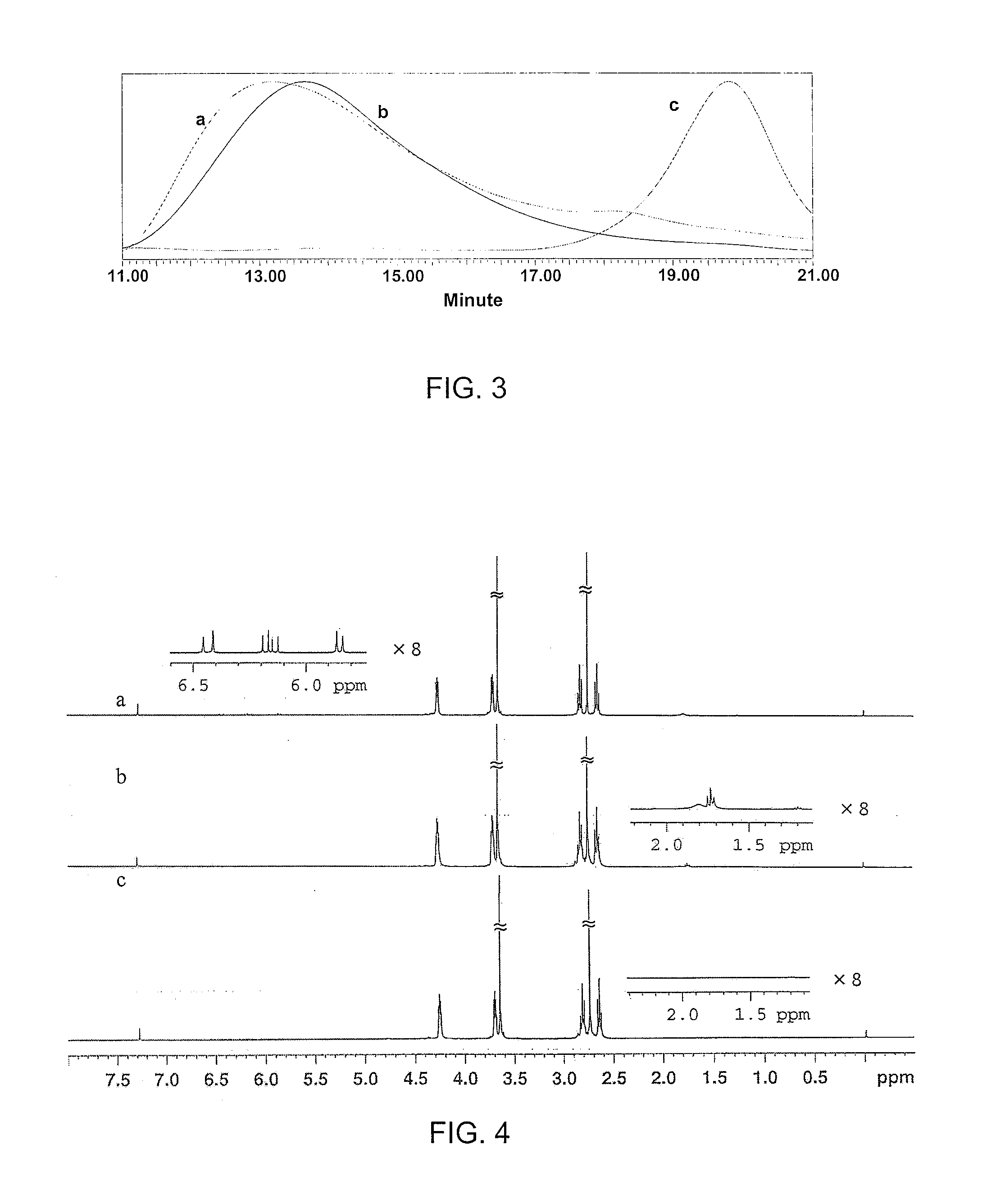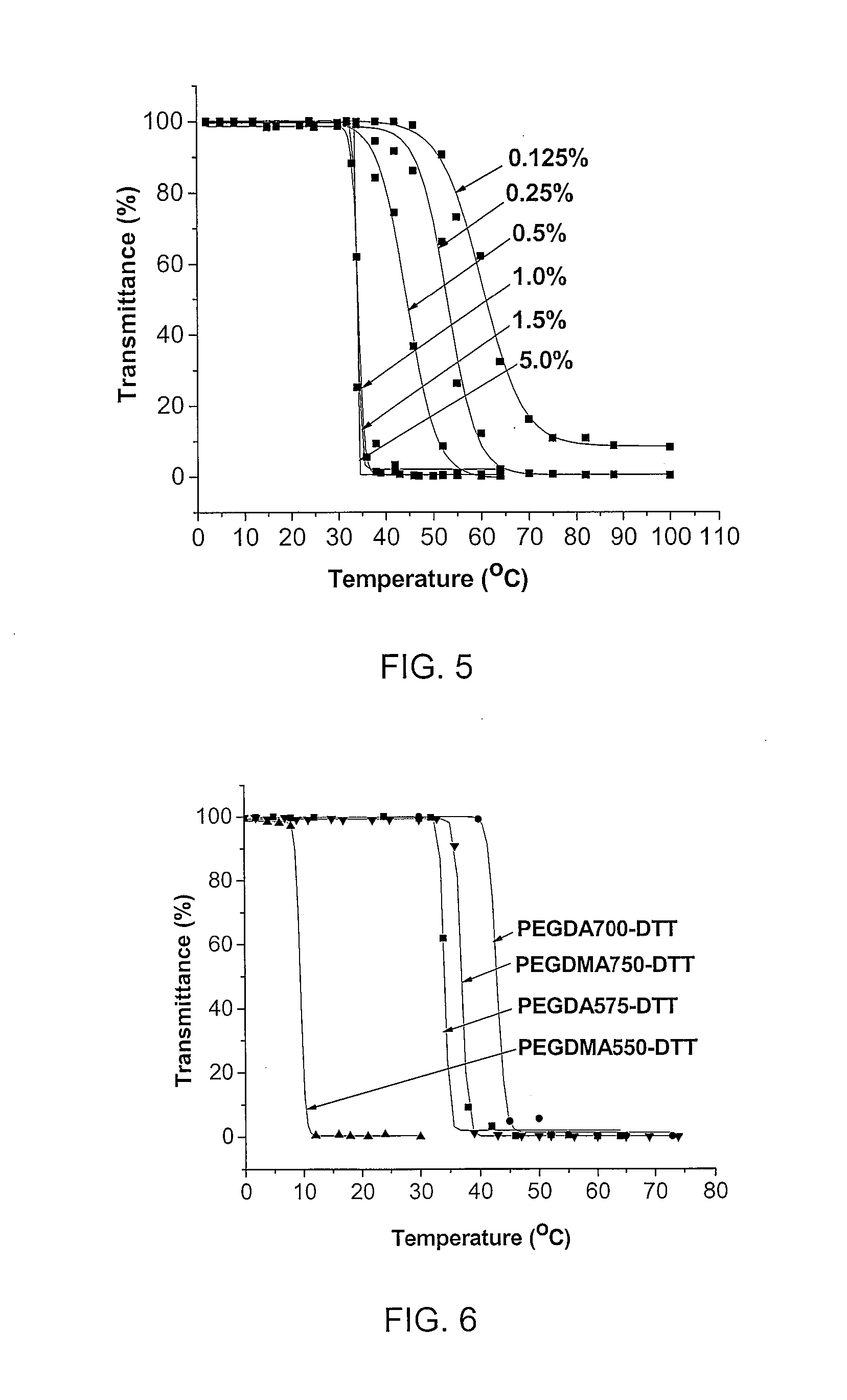Degradable thermoresponsive poly(ethylene glycol) analogue materials
a thermoresponsive poly and analogue technology, applied in the field of degradable thermoresponsive poly (ethylene glycol) analogue materials, can solve the problems of inability to use in vivo and non-degradable polymers, and achieve the effect of reducing the critical solubility temperature (lcst) and fast degradability through hydrolysis
- Summary
- Abstract
- Description
- Claims
- Application Information
AI Technical Summary
Benefits of technology
Problems solved by technology
Method used
Image
Examples
examples demonstrating dpeg
Functionalization
[0029]In addition to the functional groups introduced by using dithiols having functional groups, such as DTT, the DPEGs could easily be functionalized with terminal (meth)acrylate or thiol groups (Scheme 3). The ratio of di(meth)acrylate monomer to dithiol monomer was first kept at 1 / 1 molar ratio to make a high molecular weight polymer. After a desirable molecular weight was reached (e.g., PEGDA258-DET, Mn: 36,900, PDI: 1.58), an excess of dithiol or di(meth)acrylate monomer was added to the reaction solution to cap the polymer ends with either thiol or (meth)acrylate. Typical 1H-NMR spectra are shown in FIG. 4. The peaks at about 5.8 ppm, 6.1-6.2 ppm, and 6.4 ppm were present in the NMR spectrum of PEGDA258-DET-diacrylates, indicating the existence of terminal acrylate groups. The molecular weight calculated from the integrations of the acrylate peaks and the ester peak was about half of the values measured by GPC (Mn: 36,900, PDI: 1.58), suggesting that the poly...
PUM
| Property | Measurement | Unit |
|---|---|---|
| critical solubility temperatures | aaaaa | aaaaa |
| molar ratio | aaaaa | aaaaa |
| PDI | aaaaa | aaaaa |
Abstract
Description
Claims
Application Information
 Login to View More
Login to View More - R&D
- Intellectual Property
- Life Sciences
- Materials
- Tech Scout
- Unparalleled Data Quality
- Higher Quality Content
- 60% Fewer Hallucinations
Browse by: Latest US Patents, China's latest patents, Technical Efficacy Thesaurus, Application Domain, Technology Topic, Popular Technical Reports.
© 2025 PatSnap. All rights reserved.Legal|Privacy policy|Modern Slavery Act Transparency Statement|Sitemap|About US| Contact US: help@patsnap.com



